By Gouri Satya, Sr. Journalist
A look at the growth of Mysuru reveals an interesting feature of how the city expanded from Agraharas and Keris to Mohallas, Purams and Extensions. Initially, it was the construction of just one road with a few houses and as the population began to rise, construction of Mohallas, Purams and Extensions were taken up with roads and crosses.
At the time of shifting of the headquarters to Mysuru from Srirangapatna, the erstwhile capital was in a devastating condition. The Fort and the Palace had been demolished. The situation was so bad that there was no proper structure where the installation of Maharaja Krishnaraja Wadiyar III could be conducted. As a result, the city had to be rebuilt, including a suitable residential place for the newly-installed King and his family.
The rebuilding of the capital city began after the restoration of the kingdom to the Mysuru royal family. From then on, Mysuru began to expand, adding new areas.
Initially, it began with the construction of houses within the Fort and later outside its four walls. New Keris and Agraharas began to appear. Besides Krishnaraja Wadiyar III, even his queens took interest in constructing Agraharas of 21 houses and donated them to deserving persons of the Brahmin community. These Keris and Agraharas came up in the then existing Fort Mohalla, Devaraja Mohalla, Krishnaraja Mohalla, Lashkar Mohalla and Mandi Mohalla, resulting in their expansion.
As the city began to witness a rise in population and the need for more houses began, the development moved from the construction of one-street Agraharas to Purams and Extensions like Lakshmipuram, Saraswathipuram, Chamarajapuram, Vani Vilasa Puram, Jayalakshmipuram, Chamundipuram (which includes Hosakeri and Chamundi Extension), Vidyaranyapuram, and Nagaras of a larger scale like Vishweshwara Nagara, Kuvempunagara, Vijayanagara and J.P. Nagara. New layouts with new names began to be developed on all four sides of the city, private developers also entering the field as the city progressed.
Subbarayadasara Agrahara
An interesting feature in this expansion is the contribution made by a few prominent personalities who evinced interest in constructing new Agraharas, apart from the rulers and their queens. Perhaps, Subbarayadasa surnamed Gopaladasa was the first such person to construct an Agrahara. According to records, this saintly person formed an Agrahara in 1836 and gifted it to Brahmin priests.
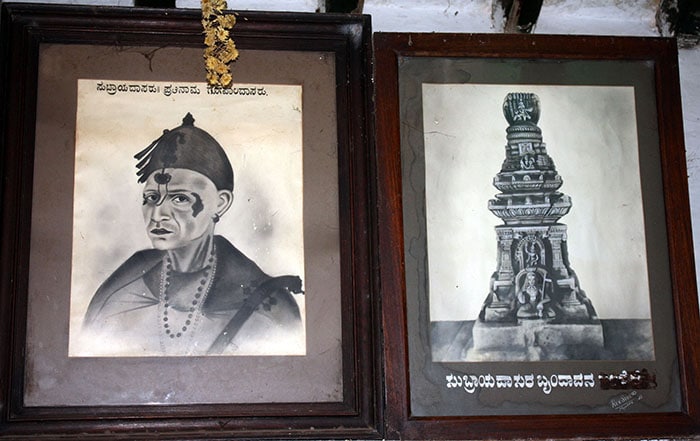
Formed in his name, the Agrahara was named ‘Subbarayadasara Agrahara’ and it was opposite the Prasanna Venkataramanaswamy Temple. Subbarayadasa made this Agrahara for ‘increasing the merit of the king, Krishnaraja Wadiyar III, and for the accruement of merit of his forefathers, of himself and his elder brother, Sinappadasa.’
The Agrahara had nine houses built for accommodating the priests of the temple. It included a feeding house (Anna Chatra) at its beginning. The land for the construction of the Agrahara was given by the Maharaja, who also had granted Vrittis of six varahas a person to three priests, Venkappachar, Venkatarama Sastri and Krishnadasa, who conducted daily worship in the temple and other residents, for their livelihood.
Wooden Chariot
Opposite the eastern entrance to the temple stood a shaded structure to station the wooden chariot used for taking out the idol of the deity in procession through the streets. There was also a pond with an Anjaneya Temple and it was named ‘Srinivasa Pushkarani’ and a garden as well. The grove provided flowers and other requirements for the daily worship of the deities in the main temple and in its small shrines.
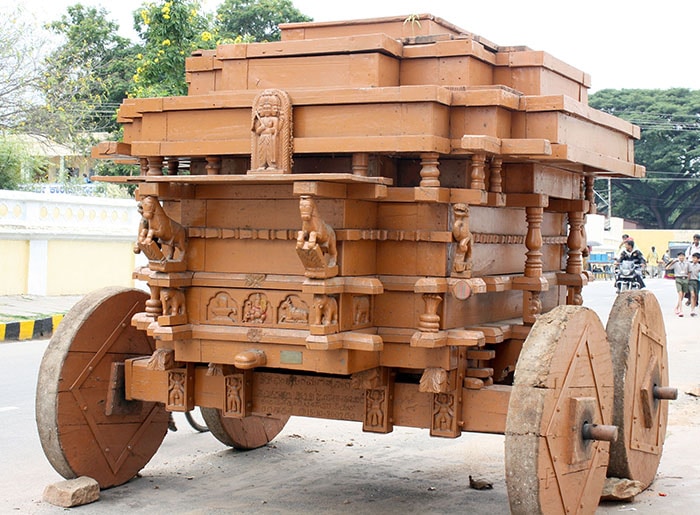
It may be noted that the Subbarayadasara Agrahara came up 15 years after the construction of the Krishnavilasa Agrahara with 20 houses which was built in 1821, along with the Lakshmivilasa Agrahara, which was opposite to it and Ramavilasa Agrahara. It was later the Jaganmohan Palace (1861), Maharani’s School (1889), the Dewan’s Bungalow of Sir Seshadri Iyer, which houses the Commercial Tax offices now, and other structures came up.
The temple has two entrances, one facing the east and the other to the South, facing the historic Maharani’s School. This was probably the first Agrahara to be constructed by a private person in Mysuru.
About Subbarayadasa
The highly revered Madhwa saint, a protector in all respects (sarvavishayadallu samrakshaka), was an officer in the Palace. He lived in the house, which was later converted into the temple of Prasanna Venkataramana, enjoying the ‘bhatamanya’ and ‘vritti’ at Anandur previously granted by the mother of Krishnaraja Wadiyar III, dowager queen Lakshmammanni.
Popularly known as ‘Mysore Subbarayadasa’, he was held in high reverence for his religious practices and pious acts. A devotee of Prasanna Venkatesha, Subbarayadasa is believed to have performed many pious deeds and miracles during the time of Maharaja Krishnaraja Wadiyar III. In recognition of his pious deeds, the Maharaja conferred on him several gifts and honours, including the piece of land for the construction of the Agrahara. The Maharaja had also made a payment of 3,680 ‘Kanthiraya Hana’ in 1843 for the feeding house Subbarayadasa was running at Bilikere.
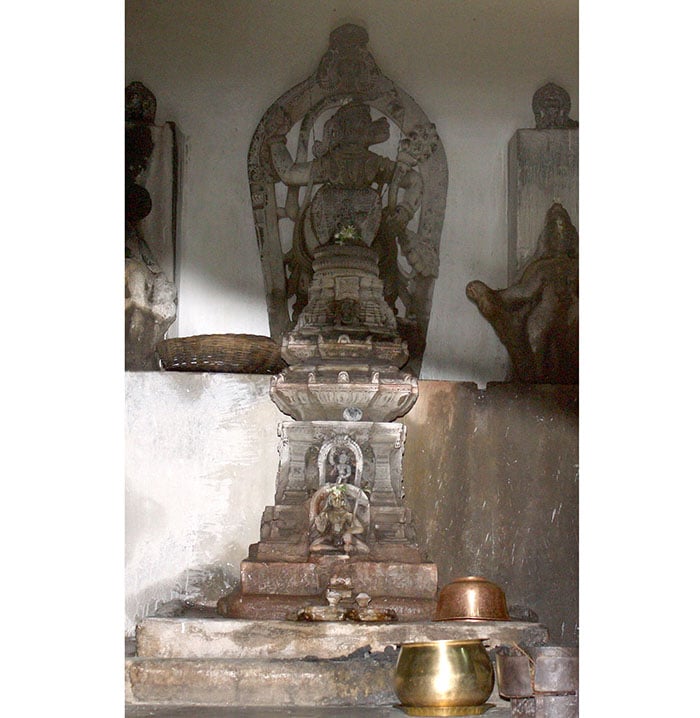
When plague epidemic broke out in Mysuru and many people died, Lord Venkatesha is said to have appeared before Subbarayadasa like a boy in his dream and told him that the disease would disappear and the desires would be fulfilled if he distributed three ‘Angaras’, one ‘Kanthiraya Hana’, the then currency, and ‘Mantrakshate’ (sanctified rice grains) to the people in the town from the next day. Acting according to the direction he had received in his dream, Subbarayadasa distributed angara (sacred ash applied on forehead) and tirtha (sacred water) for nine days without food or sleep.
When subsequently Subbarayadasa decided to go on a pilgrimage, the Maharaja invited him to the Palace and honoured him with valuable presents. He also made gifts to the deity Venkataramanaswamy. Subbarayadasa undertook the pilgrimage in the palanquin Mummadi Krishnaraja Wadiyar had given to him besides money.
After returning from his pilgrimage, he presented the sacred water of the Ganges he had brought with him to the Maharaja. Pleased with this, the Maharaja got the temple constructed for Lord Prasanna Venkataramanaswamy in the house of Subbarayadasa in Krishnavilasa Agrahara with a tower, a pond (Srinivasa Pushkarani), a Mantapa, a garden, etc. He also got a chariot made for the temple for the procession and gave a grant of Rs. 100 a month for the festivals to be conducted.
After his house became a temple dedicated to Lord Venkatesha in 1825, Subbarayadasa built the Agrahara to provide houses for the priests in 1836.
The Lord Venkatesha Temple
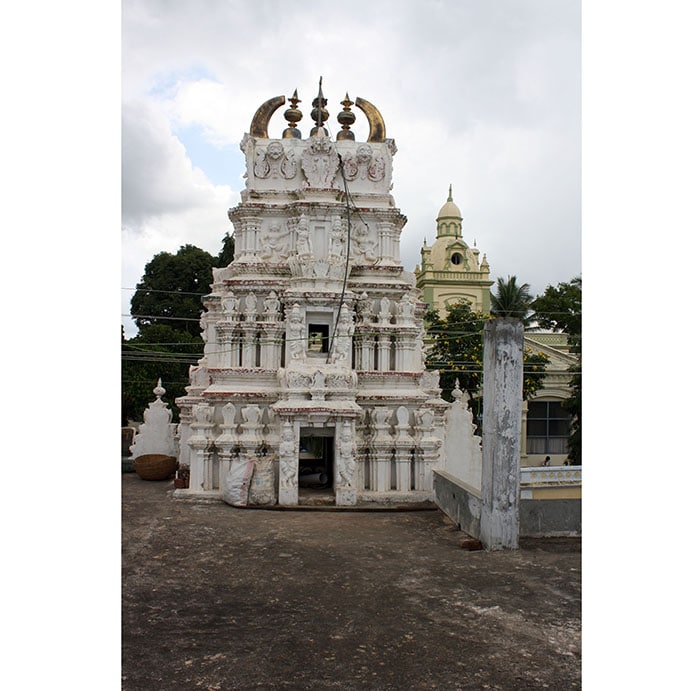
Inside the temple, there is a three feet high ‘Bhakta Vigraha’ of Subbarayadasa with an inscription by its sides giving his name and other details. The Madhwa saint is shown as though giving away everything that he has. He carries musical instrument Thamburi and in his left hand a water vessel from the sprout of which falls a libation of water in the act of giving everything he can to the God he held close to his heart. A statue of his brother, Sinappadasa is also seen in the temple. The ‘Brindavana’ of Subbarayadasa is located within the premises.
On the slab above the doorway of the Anjaneya shrine, the inscription dated 1836 gives elaborate details of the piety, charities made to the God, and long journeys undertaken by Subbarayadasa all over India. Two stones fixed to the wall on either side of the entrance to the garbhagriha, narrate about Subbarayadasa and the grant of 3680 varahas the Maharaja had ordered to be paid from the Palace Treasury by Lingarajaiya Arasu to the feeding house run by Subbarayadasa at Bilikere. Pleased over the manner in which the temple and other facilities had come up, Maharaja Krishnaraja Wadiyar III had the inscriptions installed.
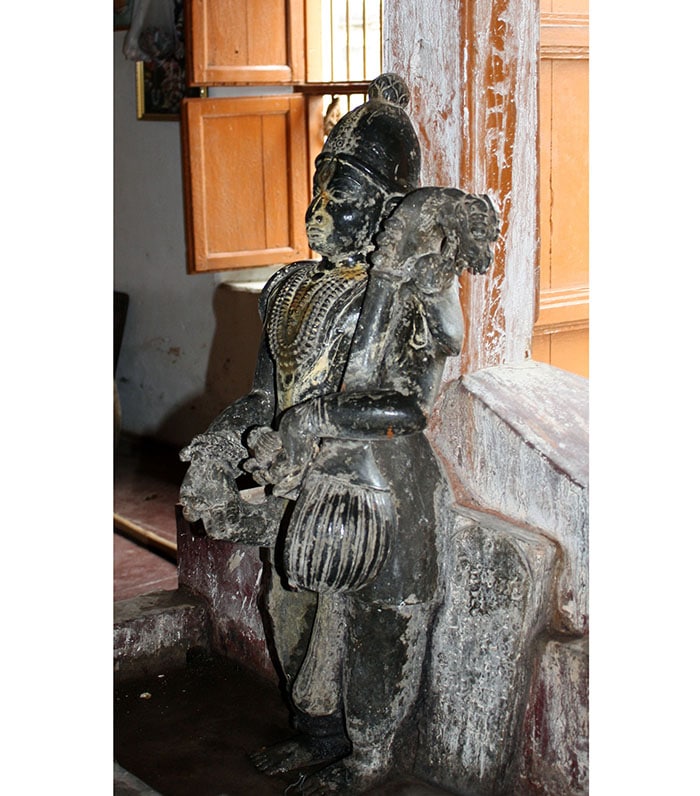
Chitra Mantapa
A significant feature of the temple is the Mantapa above the Anjaneya shrine. This unique ‘Chitra Mantapa’ is fully decorated with Mysuru-style paintings of Mummadi Krishnaraja Wadiyar’s era. The interior four walls of the painted hall are fully covered with frescos of 12 Maharajas of Mysuru mentioning their names and period of their reign, maps of Mysuru and Srirangapatna and sketches of pilgrim places.
There is also a wooden panel showing sage Vyasa seated on the coils under the canopy of a five-hooded serpent, attended by Madhwacharya, Garuda, Bhima and Anjaneya. In the lower portion are the standing figures of Dewan Purnaiah, Krishnaraja Wadiyar III, Subbarayadasa and Sinappadasa.
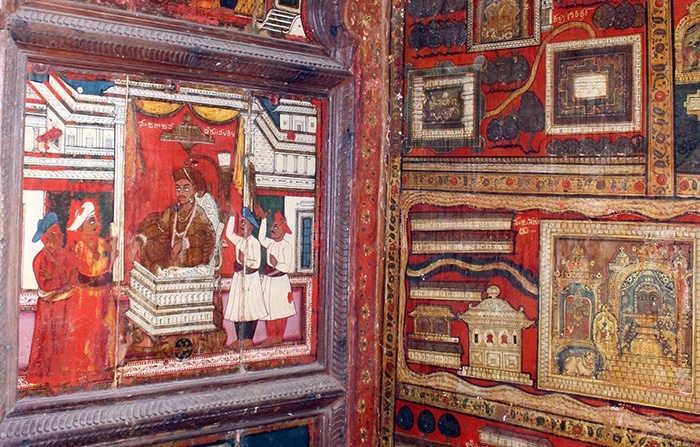
The temple and the Agrahara stand as a mark of testimony to the benevolent act by two notable personalities of the period — a king and savant. While Maharaja Krishnaraja Wadiyar III patronised Subbarayadasa, the Madhwa saint made his home a temple and built an Agrahara and offered everything to his patron deity deciding not to have anything for himself.
Standing in memory of this devoted person, the temple adds to the significance of Krishnavilasa Road, which also has the historic Parakala Mutt at the commencement of the Agrahara.



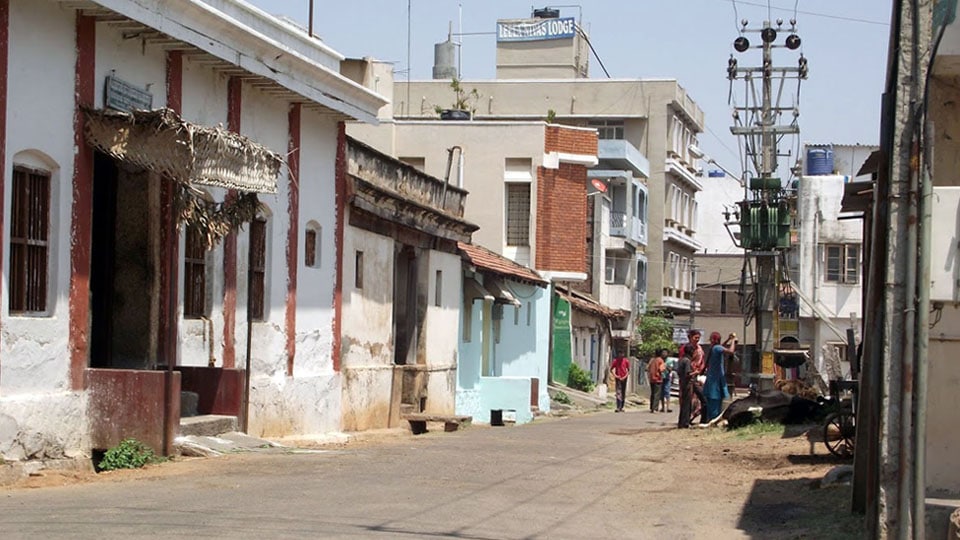




A very nice informative article. Even though I have walked in front of that temple many times during my younger days, I never knew the history of that place.
Than you very much for enlightening me.
A. R. Char
Thanks Char.
Interesting historical facts. My middle school years were spent in a school near Parakala Mutt, and the Agrahara land marks around that area was familiar to me, as I used to visit my classmates who lived in those parts.
But these are for history books and nostalgic walk through when Mysuru had a compact population and even in early 1950s during my middle years. Mysoreans then were born, brought up and most worked in the City.
During my last visit to Mysuru and India, about 3 decades ago. I could see the devastation caused by the population explosion, and how little. the immigrants in Mysuru cared for its history One could see the same attitude of Immigrants from Mysuru and elsewhere from India resident in historic cities in Western countries, and how little they care about the history of these places, and hence the preservation .
When the ruling leaders of Karnataka plan Chamundi Hill as a place for tourist attraction, one could visualise the direction the country is marching towards. The pertinent question is not what it was , but what it has become. The same can be asked about many iconic institutions in Mysuru
As a Mysorean of Yore, I agree with @Katilya. I was perhaps the ancient person who actually read ‘Mysuru Kaipidi’,the book of history which was heavily quoted in the history class of my sisters. This book was fascinating to read, and had in its core the development ofMysuru under the royalty.
Interesting that almost all the Dewans resided in Bengaluru, which was developed in a responsible way by Sir K, Seshadri Iyer. These Dewans , aprtcularly mIyer and Mirza Ismail temporarily resided part of the year in Mysuru. Nalwadi spent part of the year too in Begaluru in his Palace.
.During 1950s, Bengaluru provided nice comparison and contrast,the inimitable red buildings and iconic Bull Temple . Indeed, Basavanagudi and the nearby pets=Akki Pet, Chikka Pet etc.. have their own histories. As some one from Mysuru, an young boy, it was fascinating to hear the development of Bengaluru from a hamlet to the city then. from none other than the great DVG, a resident of Basavanagudi then and a friend of my father. What Begnaluru lacked was the quintessential grandeur of Mysuru. To me, this is more to do with the Chamudi Hill and the deity there, casting benevolent eyes towards the Palalce residents.
Yes, the question certainly, is what it has become now?
I should have added quintessential grandeur of Mysuru with its Dasara and Rathothsava of the Goddess in the Hill.
I can appreciate the distant history of Mysuru that this article narrates, but to me more interesting was how that distant history was mapped onto our lives during the first 15 years after independence. The landmarks that appear there, the coronation of the new seer of Parakala Mutt, the quiet calming premises of the Ahobila mutt/temple opposite, and the how the Vaishnava tradition in those days , thanks to Parakala Mutt ( although I did not belong to their tradition), prevailed on most of the Santhepet merchant community, and hence their moral parameters when conducting whole sale and retail businesses were much more relevant.
Like @Kauilya and @Jalandhara I consider myself lucky o have lived in 1950s to savour the landmarks in and to witness the glory of Mysuru, although my parents and their friends were warning about the problems that lie ahead having seen better days under Nalwadi . Those days were the tail end of Mysuru as a place of comfortable abode. We could walk from end to end, on the footpath (pavement), look at elephants being trained in Ane Karoti, buy pansare essentials from Govinda Shetty in his small, but well stocked shop opposite to the Dufferin clock tower. , after completing the vegetable and fruit purchases in the Devaraja market. That was living history for persons of my vintage. With that background I am able to appreciate this article that much better.
Although, I appreciate the purpose of this article, that is to inculcate the vision of those years well past, how , Mysuru gradually emerged to become the place that was in the first part of the 20th Century. Not sure whether many of the current residents, who are from other parts of India, as the core Mysoreans shrunk in numbers over the years, have time to know more about the City of the past, and hence, develop interests in preserving what is left of it today. I do not blame them with the realisation that their Indian counterparts who emigrated to Western countries and cities, as the above poster puts it, make very little effort to know more about the history of the places they now live. I can give an example of New Zealand, I hasten to add I do not live there, where the recent massive influx of legal and illegal Indians are causing resentment, as they do not care about the wonderful nature this country is endowed with. I wonder what my late mathematics
lecturer who made his home there, would think had he lived today.
The sombre lesson is the country’s galloping population explosion is not only destroying this country but other countries too. Talking about heritage hence, makes not much sense in today’s context of Indian Variant contribution to the rest of the world!
Yet another brilliant piece by you sir! Thanks for writing this.
Thanks, Arun Padaki.